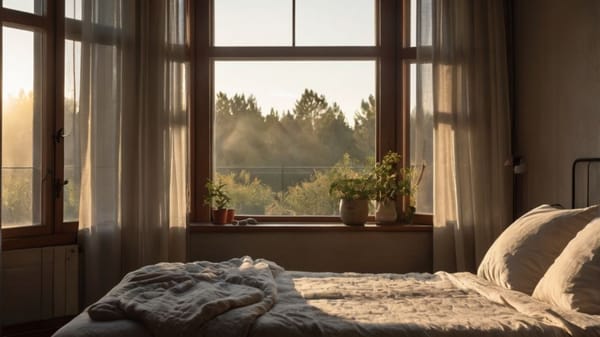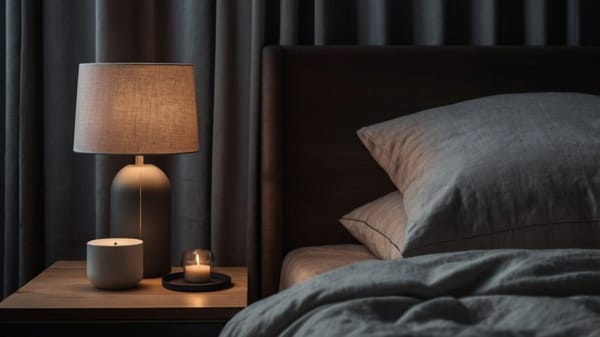Do You Really Have Delayed Sleep Phase Syndrome?
Struggling with late nights and groggy mornings? Learn how to spot and fix Delayed Sleep Phase Syndrome with simple, science-backed steps.

Ever wonder why you feel fully awake at midnight but useless at 8 a.m.—even when you want to change? You’re not lazy, broken, or lacking discipline.
You might be wired differently. Delayed Sleep Phase Syndrome is a real, fixable condition where your internal clock runs late—by hours.
If your sleep feels stuck in a late-night loop, keep reading. The problem isn’t you—it’s your timing. And yes, you can shift it.
What Is DSPS? And What Isn’t?
Delayed Sleep Phase Syndrome is a circadian rhythm disorder. It means your internal clock runs late—hours late. Your body doesn’t start winding down at 9 or 10 p.m. like most people.
Instead, it gets into “go mode” when the rest of the world is going to bed. That means your natural sleep window starts at midnight—or even later—and trying to fall asleep earlier feels like trying to force a nap at 5 p.m.
But here’s what DSPS isn’t:
- It’s not insomnia. You can sleep—you just do it on a nonstandard schedule.
- It’s not laziness. You’re not choosing this. Your body’s clock is biologically shifted.
- It’s not just being a night owl. Some people prefer the quiet of night. DSPS means you’re biologically unable to sleep earlier, even when you want to.

It often starts in adolescence, but it can show up in your 20s, 30s, or even later. Left unchecked, it can throw off your energy, productivity, focus, and even your mood. The good news?
It can be managed—without meds, without complicated routines, and without moving to a cabin in the woods.
How to Know If You Actually Have It
Here’s the real test:
If you had zero responsibilities—no job, no alarms, no obligations—when would your body naturally fall asleep and wake up?
People with DSPS consistently fall asleep late and wake up late even when they don’t have to. That’s the key difference between DSPS and poor sleep habits.
If your sleep improves the second you go on vacation, it’s probably just a sleep debt problem. But if your body still fights for a 2–10 a.m. schedule even when life lets you rest—DSPS might be in play.
Ask yourself:
- Do you lie awake for hours when you try to sleep at a “normal” time?
- Do you feel wide awake late at night, no matter how tired you were earlier?
- Do you wake up groggy and foggy even after a full 8+ hours?
- Do you feel best when you follow a late-night, late-morning rhythm?
If that’s you, it’s not your fault. But it is your responsibility—if you want to change it.
What’s Causing It: The Biology of a Late Clock
At the center of your sleep-wake system is a tiny structure in your brain called the suprachiasmatic nucleus (SCN). It’s your body’s internal master clock.
This clock controls everything from hormone release to body temperature to alertness levels. And for people with DSPS, that clock is out of sync—delayed by two or more hours.
Why? There’s no single answer. Genetics play a role. So do environmental cues—like light exposure, screen time, caffeine, and inconsistent wake-up times.
Even small shifts in routine (like sleeping in on weekends) can push your clock later, and once it drifts, it stays there unless you actively shift it back.
You can’t “force” your body to sleep earlier. You have to trick it—consistently—into believing it lives in a different time zone.
Rewriting Your Sleep Schedule Without Burning Out
You don’t need to go full biohacker. You don’t need to meditate for 40 minutes or take a laundry list of supplements. You just need to understand how to communicate with your body clock.
Get Morning Light—Fast and Daily
Your circadian rhythm is most sensitive to light first thing in the morning. Light exposure tells your brain, “It’s daytime. Start the clock.” Without that signal, your body doesn’t know when to feel sleepy later.
The fix: Within 15–30 minutes of waking, get outside. Not near a window—outside. Even 10–15 minutes of cloudy daylight is better than any indoor light. Bonus if you move—walk, stretch, just don’t stay on the couch. Do it every day. No exceptions.
Shift Your Evening Environment
The later your night looks, the later your brain thinks it should sleep. Overhead lighting, screens, fast-paced work, intense conversations—all of it signals your brain to stay alert.
Try this: About 2 hours before your target bedtime, start dimming lights. Use warm, indirect lighting.
Switch to physical books, low-key music, journaling, or slow stretches. This is your wind-down window—and it matters as much as morning light.
Use Melatonin (Smartly)
Melatonin works—but only if you time it right. Most people take it too late or in doses that are way too high.
Try 0.3–1 mg of melatonin about 5–6 hours before your normal fall-asleep time. So if you currently fall asleep around 2 a.m., take it between 8–9 p.m.
This doesn’t knock you out—it simply tells your body clock, “Time to shift.” Use it for a few weeks consistently as you work to move your rhythm earlier.
Stay Ruthlessly Consistent—Even on Weekends
This is the part nobody wants to hear—but it’s the most important. You cannot reset your clock if you “sleep in” on weekends. Every time you do, it’s like flying to a new time zone and back. You’ll never stabilize.
Pick a wake-up time that works for your goals. Stick to it every single day. Build your entire routine around it—eating, working, winding down. Your circadian rhythm doesn’t care if it’s Saturday.
Stack the Cues
Light is your anchor, but other cues help too. Eat meals at the same times every day. Schedule workouts earlier in the day.
Avoid caffeine after noon. Keep your bedroom cool, dark, and quiet. Every signal you give your body helps lock in a stable rhythm.
What Happens When You Get It Right
Realigning your sleep schedule doesn’t just help you fall asleep faster. It clears brain fog. Boosts energy. Improves focus. Makes workouts feel easier.
Helps your mood stabilize. Your whole system—from hormones to digestion to performance—runs smoother when your circadian rhythm is synced.
You don’t need to become a morning person. You just need to stop fighting your biology. Once your rhythm aligns with your life, everything feels lighter.
Less forced. More natural. That’s what optimal sleep does—it takes the friction out of your day.
Final Thoughts: Start Today, Not Someday
If your nights are restless and your mornings are brutal, it’s time to stop blaming bad habits. Delayed Sleep Phase Syndrome is real—but it’s also manageable. With the right strategy, you can shift your internal clock and feel human again.
You don’t need to overhaul your life. You just need to send the right signals, consistently, every day.
Start tomorrow. Wake up at the same time. Step into the daylight. Dim your lights tonight. Repeat. Your body knows how to fix itself—you just have to show it when to start.




